A fun, photogenic, and food-filled country like this is a place where you’ll always need well-charged devices. Whether you’re planning to bring your digital camera to capture the Fontana di Trevi or an electric toothbrush to freshen up between copious plates of garlicky pasta, having the right Italy power adapter can make or break your trip!
US to Italy Power Adapter: What Plug Do I Need? (2025)
Which power outlets do they use in Italy?
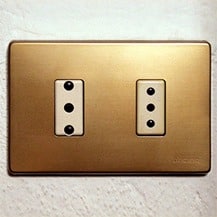
Outlets in Italy support either Type F, Type L plugs, or Type C.
This means American Type A/B plugs are not the right shape—and you will need an adapter to charge your devices while abroad.
Electricity in Italy conforms to the European standard of 220V to 230V, with a frequency of 50Hz, whereas in the US, for example, the electrical supply comes out of the wall at 110 to 120 volts, and the frequency is 60 Hertz.
Wall outlets in Italy will fit device plugs with two or three round pins. Plugs with the three round pins tend to stay in the wall better and are more grounded.
What kind of power adapter do I need for Italy?
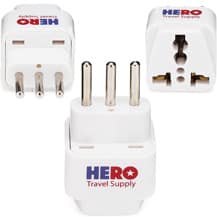
When preparing for your trip, you’ll probably be wondering, “What plug do I need for Italy?” You’ll need at least a basic two-prong plug adapter, European standard. Look for an adapter that allows you to plug in a Type A/B device into a Type F or L outlet.
We highly recommend traveling with this grounded Italy Adapter (pictured) that’s specifically designed for Italian wall outlets. The fact that it is grounded adds an additional level of safety, which helps prevent high voltages of electricity from ruining your devices. Also, if you use two pinned adapters in Italy, they are more prone to falling out of the outlets!
This one comes with a lifetime replacement guarantee so you can trust the quality craftsmanship. It is our favorite brand that we trust for all global travels and it will serve you well in Italy!
Other Italy Packing List Items
In addition to your US-to-Italy power adapter, these items will help you on your travels. Also, check out our Italy packing list for more inspiration and ideas.
-
1. Neck Wallet / Passport Pouch
Most of the touristy cities (such as Rome, Venice, and Florence) are prevalent with pickpocketers. So it’s quite risky to walk around with your wallet in your pocket, flashing money everywhere you go. Instead, we recommend putting your cash, credit cards, passports, smartphones, and any other small valuables in a neck wallet. Sticky fingers can easily snatch your valuables if they are in your pocket, but it will be almost impossible for them if they are safely tucked away in a neck wallet. Bonus points for the fact that it’s RFID-blocking to stop e-thieves!
![neck wallet]()
-
2. Lipstick-Sized Portable Charger
What happens if your phone or camera runs out of battery when you’re in transit between tourist sites? The best way to ensure you are photo-ready and connected at all times is to carry a lipstick-sized charger in your pocket. We’ve used this in times of emergency to call for a ride or find our hotel when we forgot the very foreign-sounding name.
![Lipstick-Sized Charger]()
-
3. Virtual Private Network (VPN)
Italy is ranked in the Top 3 Most Targeted Countries for cybercrime and online attacks. My family and I discovered this first-hand when my credit card number was hacked at our Airbnb. Do not log in to public Wi-Fi networks at cafes, airports, or hotels without a virtual private network. A VPN will give you an encrypted method for safely surfing the internet.
It will also limit any online censorship you may experience in Italy that could make streaming Netflix, Hulu, HBO, and other content apps – much harder! A VPN will give you access to networks in 60 countries, so you will basically have access to the whole world’s view of the internet, (with unlimited bandwidth for a faster connection, might I add!) It’s affordable and 100% necessary to stop hackers from taking your PayPal passport or selling your sensitive data, so don’t overlook it.
![how a vpn works]()
-
4. Packing Cubes
Packing cubes will save you time and space, allowing you to organize your suitcase into categories of items. Separate your socks and underwear from your shirts and pants, so you know more easily where everything has been stashed. Keep dirty shoes in their own cube, essentials in one, and electronics accessories all together. By using packing cubes, you’re less likely to lose items—and be able to pack your suitcase quickly and efficiently as you move from one city to another on your Italian tour. It even comes with bonus laundry bags to separate your dirty items, woo-hoo!
![packing cubes]()
-
5. Jet Lag Relief
The journey to Italy is far, regardless of where your starting point is. Use these homeopathic jet lag relief supplements to make your trip way smoother. Instead of being bogged down with exhaustion and sleeping through your first day in Italy, this will help you wake up refreshed and adapted to the time change (despite any awful layovers or flight delays).
![jet lag relief]()
-
6. Travel Insurance for Italy
Italy is not a cheap place to pay out-of-pocket for medical expenses. Insurance was once mandated for all visitors, but it is still strongly recommended because tourists are not covered by the local healthcare system. Being that your domestic provider does not extend overseas, you will need to protect yourself in case of emergencies. Travel insurance covers lost bags, flight delays, theft, cancelation, rental issues, medical transports, and expensive international hospital bills.
We use Faye and love how easy it is to make claims and get reimbursed straight from their app. With 24/7 customer support, they offer comprehensive plans and awesome add-ons like “trip cancellation for any reason” and even coverage for traveling pets. Their Claims Specialists helped us to contact our American doctor and really added a human touch to the whole digital experience. Overall, protection for your trip investment is one of the most important things you can have. And it’s more affordable than people realize.
![Travel Insurance for Italy]()
-
7. Quick-Dry Travel Towel
Travel towels are one of the most versatile packing items you can bring on any trip. Whether it’s drying off after a dip in the Mediterranean, dancing under the Tuscan sun, sitting on the beach, or wiping away sweat — a travel towel is a must during any experience in Italy. We recommend these microfiber towels that are premium-grade, compact, odor-resistant, and dry 10x faster than cotton.
![Quick-Dry Travel Towel]()
-
8. Luggage Straps
Luggage straps are a super underrated travel accessory! For a small price, you will find infinite uses for these, and they’ve saved the day for us on numerous occasions. Use it to reinforce your zippers so no bag pops open during transit (regardless of how rough the baggage handlers or cruise staff are with your belongings!) And baggage damage/loss happens more frequently for international flights (about 800% more than for domestic flights), so I wouldn’t risk it.
It will also simplify the search for your bag (due to the bright colors and built-in contact card so you’ll immediately know which bags are yours). These are backed by a lifetime replacement guarantee and an avid traveler will find them revolutionary at worst, life-changing at best.
![luggage straps]()
-
9. Activated Charcoal
Italy is chalked full of flavorful, saucy, spicy, and fresh foods that are arguably the world’s best! Nonetheless, traveler’s diarrhea is a common occurrence as our bodies adjust to a new cuisine and water supply. We always bring these activated charcoal tablets on our travels since they quickly detoxify any pathogens that may be harming your system.
![Activated Charcoal]()
-
10. Windproof Travel Umbrella
There are so many amazing attractions to visit in Italy, so you don’t want your plans to be put on hold due to some unexpected rain. Make sure you come prepared with a reliable, compact travel umbrella. The one we recommend has a handy automatic open/close function that makes it a breeze to open and close when you’re entering or leaving a museum or any other attraction.
![Windproof Travel Umbrella]()
-
11. Hanging Toiletry Bag
If you’ve been to Europe, you know the bathrooms are a joke! Appropriately referred to as ‘water closets’ in the UK, you’ll have just enough room to handle business and not much more to spare. This hanging toiletry bag is a game-changer for creating built-in storage from thin air. It hooks anywhere and is great for camping too.
It unfolds with 4 giant pockets that can hold all of your skincare, haircare, makeup, medications, face towels, and more – these are made by a woman-owned brand after all, so they know how important it is to be able to travel with your favorite self-care products. Equipped with premium YKK zippers and a life-time guarantee, these bags were built to last.
![hanging toiletry bag]()
-
12. Filtered Water Bottle
The water is reasonably clean in Italy, but you don’t want to spend a fortune on plastic bottled water. I bring my own filtered water bottle on every trip to maintain autonomy over my water supply. This Brita option is affordable and noticeably improves the taste of your water. You can empty it when going through the airport security checkpoint and then refill it once you’re at the gate.
![Filtered Water Bottle]()
-
13. TSA-Approved Luggage Locks
Another item I never fly without – luggage locks. These are TSA-approved, so security won’t have to take a giant pair of scissors to them if you’re selected for a random bag search. But after having something stolen out of our checked bags, we’ll never risk it again. These are great for lockers, backpacks, suitcases, and everything in between, offering real peace of mind that your belongings are secure.
![TSA-Approved Luggage Locks]()
-
14. Packable “Just in Case” Bag
We all know the traveler’s conundrum of underestimating how much luggage you need to bring. Since the shopping is top-notch in Italy and you’ll want to bring back some divine souvenirs like olive oil, balsamic, handmade art, jewelry, and wine(!), use this “just in case” bag as your seamless solution. It counts as your personal item bag, which means you can skip the carry-on fees, prego!
![Packable “Just in Case” Bag]()
-
15. Mosquito-Repellent Bracelets
-
16. Cooling Towel
Especially if visiting in the summertime, bring this cooling towel to beat the heat. August and July can reach temps of nearly 100-degrees Fahrenheit and this nifty cloth will help you stay outside for longer periods of time. It drops to nearly 30-degrees colder than the outside temperature, making it a frosty delight on a hot day! We use them for working out, hiking, beach days, concerts, picnics, and more. Simply add water and let it work its magic!
![Cooling Towel]()
What’s the electricity and power supply like in Italy?
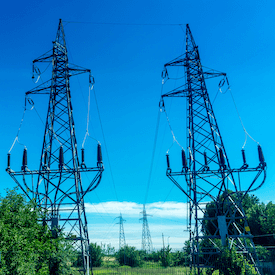
In fact, the only times you may experience a power outage is in the rare case you stay in an area where new electrical infrastructure is being constructed.
However, because electricity is generally more expensive in Europe, Italian hotels tend to have fewer outlets per room. If you are sharing a room and charging multiple devices, plan ahead to take turns using the outlets and charge your devices overnight.
Do I need a voltage converter for Italy?
Perhaps 10 years ago, one would need a voltage converter even for your laptop. However, most devices these days support dual voltage, thus making a voltage converter unnecessary in most cases. Most laptops, cameras, mobile phones, and tablets support dual voltage and you would likely only need a power adapter.
The best way to ensure that your device supports dual voltage is to check the fine print on your power cord. Look at your device or the power cord that comes with it, and you’re bound to see some small print or a button that describes its voltage capacity. If you see a range of voltages printed on the item or its plug (such as “110v–220v”), you’re all set to take your device to Italy with just a plug adapter.
Some high-powered appliances, such as a hairdryer or a travel kettle, are not dual voltage.
Other FAQs about traveling in Italy
-
1. When to travel to Italy?
![venice italy]()
It depends very much on what time of year and what part of Italy you wish to go. If you want to go skiing in the mountainous North, January through March is your best bet. Meanwhile, from Tus-cany further to the south, it gets very hot in the summer, with temperatures in Rome, for example, reaching 40 degrees (100+ F) on a daily basis in mid-summer. A general rule of thumb is that June through September is the best time to check out Italy’s many beautiful beaches. Be sure to check current Italy travel advisories before you go.
For city tourism, April, May, and September through November will see temperate climates that make urban exploration much more fun.
-
2. What is the weather like in Italy?
Italy’s climate is generally temperate and dry. In Rome, Italy’s most popular destination, winter temperatures hover at a high of 13 degrees—but scale up quickly to a scorching 40 by mid-summer. The south experiences a much milder winter, and equally hot summers but with a much more agreeable breeze.
Northern cities, like Milan, are considerably cooler, with average winter temperatures hovering around 6 degrees. Summers are equally sweltering, but winter and spring are quite rainy—making April, May, and October the best months to visit.
A general rule of thumb is to check the weather region by region to plan according to your activity—and avoid peak tourist season.
-
3. What to do in Italy?
What isn’t there to do Italy? Home of the Roman empire, with Carthaginian heritage and beautiful beaches in Sicily, the World’s Best Restaurant located in Modena, and the Renaissance art collections in Florence… Italy is a paradise for many.
Top cities for tourism include Rome for its ancient Roman ruins and history, Florence for the Renaissance art collections and architecture, Venice for the famous St Marks Square and water canals, and Milan for its avant-garde fashions.
Of course, this goes without mentioning the food – Italian cuisine is perhaps one of the best-loved around the world. One can spend a week at Sicily’s couscous festival and an entire year exploring Tuscany’s olive groves, wineries, prosciutto, pizza and pasta. Each region offers a number of opportunities for food and wine tourism.
And if you’re a beachgoer, you can’t skip Sicily or Cinque Terre. With beautiful views and glorious summer weather, Italy offers something for everyone.
-
4. Do they speak English in Italy?
English is a useful language to have if you want to get around the touristic areas of Rome, Florence or Milan. However, outside the touristic areas of these particular cities, knowing a little Italian goes a long way.
Your best bet is to practice a little Italian, pack a phrasebook, and memorize how to say basic phrases like “thank you”. One simple phrase can go a very long way with the hospitable locals.




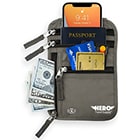




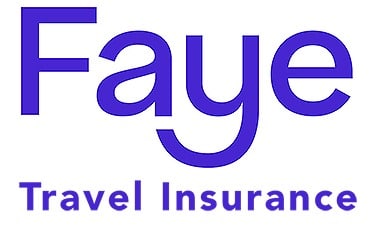



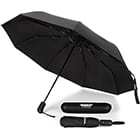
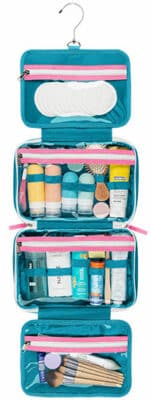

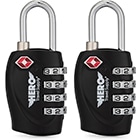
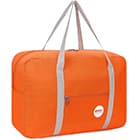
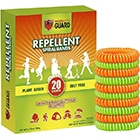
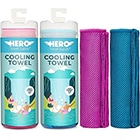

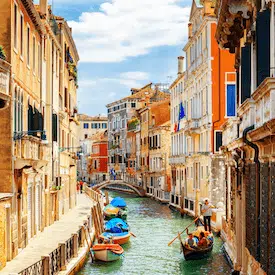 What isn’t there to do Italy? Home of the Roman empire, with Carthaginian heritage and beautiful beaches in Sicily, the World’s Best Restaurant located in Modena, and the Renaissance art collections in Florence… Italy is a paradise for many.
What isn’t there to do Italy? Home of the Roman empire, with Carthaginian heritage and beautiful beaches in Sicily, the World’s Best Restaurant located in Modena, and the Renaissance art collections in Florence… Italy is a paradise for many.